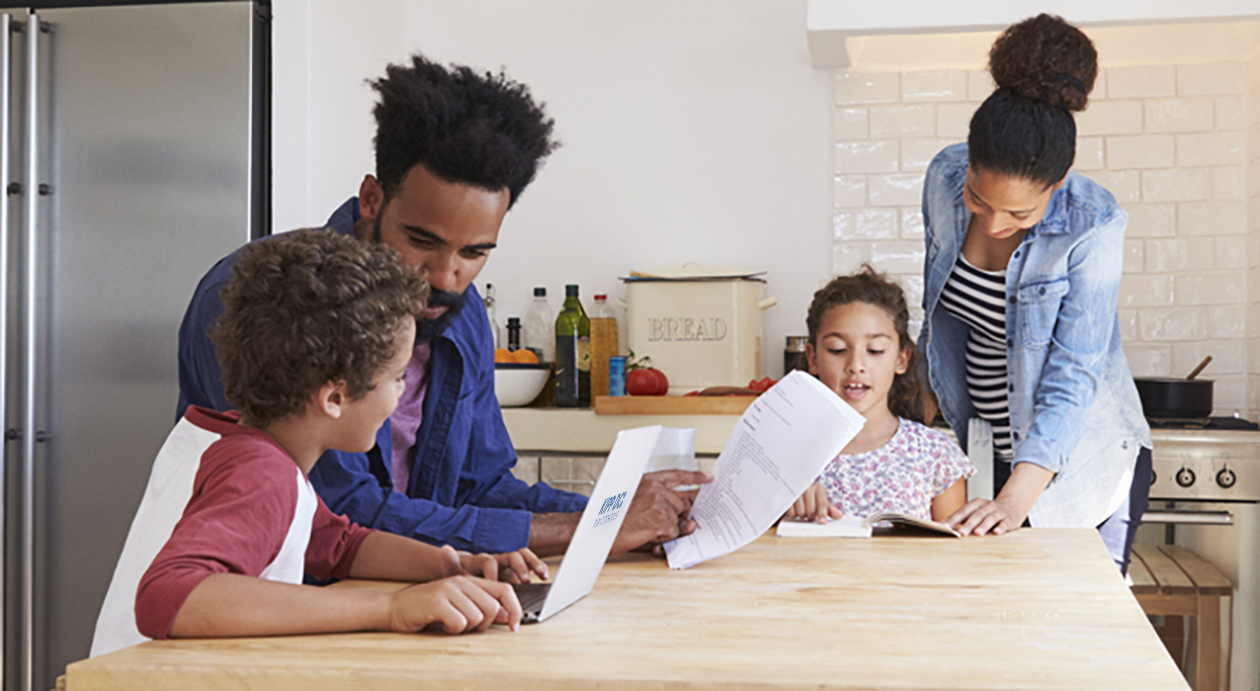Learning from home happens in many different ways – Zoom, play, cooking, time outside, and more! Here are some tips on creating a home learning environment for those Zoom calls and independent classroom activities.
Defined Space
Utilizing the same space and items each day can help to prime your student’s brain for learning.
- Designate a folding chair or pillow that always comes out for learning.
- Use painters tape to mark an X or square on the carpet.
- ASK: Do they like to be in the action or the ability to see their family go about their day? Do they do better in private space?
- ASK: Do they do better with choices? You can also offer a choice of two designated learning spaces.
Comfortability
Comfortable seating can have many positive effects on learning!
- Feet need grounding and back support for sitting long term – try to avoid bar stool seats.
- Provide the ability to stand or sit. Designate space on the floor with a tape x or square to help indicate where to stay if standing.
Integrate Interests
Creating a space that your student likes and that feels personal to them can help build motivation.
- Hang old student work near their learning space.
- Decorate the learning space with their favorite colors or characters. Use stickers or construction paper to decorate.
- Place family pictures or notes of encouragement in the learning space.
Routinized
Trying to stick to a daily schedule is fantastic, but hard! Think about what your family can reasonably commit to and write it down.
- Post a daily schedule near the learning space and common areas. Nothing fancy needed, just write it on a piece of paper! If a whiteboard is available, checking off each block is a fun task for students.
- It’s okay if there are no exact times on the schedule. “First, then” works too!
- A visual timer can be super helpful to anchor a routine. Unlike our standard timers with numbers, visual timers show the time being reduced in blocks of color.
- Free app: Visual Countdown Timer or YouTube: 5 min timer
- An oven/microwave timer also works! Tell the student to listen for the sound.
Viewpoint
Once your student has their spot, sit down where the student would sit.
- What do you see? Are there things in the visual field that could be distracting? Could you close a door, close a cabinet, or angle the chair a different way?
- Are there noises that could be reduced?
- Are materials in a contained box(es) or spread out? Old shoe or delivery boxes work great!
- Can you see your visual schedule?

